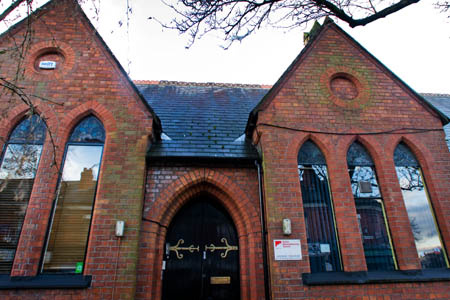
The BMC headquarters in Manchester
Membership of Britain’s representative mountaineering body continued to climb last year.
Of course they did, that’s why they join the British Mountaineering Council – but actually the numbers signing up to the Manchester-based organisation rose to a new record: more than 70,000 – five per cent up on the previous year’s total. The figures are revealed in the council’s annual report, which was published today.
In the last 19 years, the number of people joining the BMC as individuals or climbing club members has almost trebled. In 1990 there were just short of 26,000 members; in the last quarter of 2009 the number reached 71,000. While club-member numbers have remained fairly flat, the number of individuals signing up to the organisation has increased almost sevenfold in that time.
Rab Carrington, elected president of the BMC in April last year, said in the report: “The item which has made me feel proudest is the growth in membership of the BMC. This is a great reminder that a lot of what the BMC does is very important and relevant to those whose life is hillwalking and climbing.
“All we have to do now is convince the other 150,000 who walk and climb that they too should join the BMC.”
During the year, the BMC worked with parliamentary representatives to ensure its views were represented during the passage of the Marine and Coastal Access Act, which will set up a coastal path round England. It said it laid down several amendments to the coastal-access clauses of the bill and produced a series of briefing papers for MPs and Peers during the committee and report stages of the bill. The BMC also attended several meetings with Natural England and other key stakeholders.
It is now lobbying the Welsh Assembly Government to develop framework powers and a statutory approach to wider coastal access as soon as possible, so they can be delivered by the current Welsh Government alongside the scheme in England.
The BMC also backed the inclusion of climbing as an Olympic sport, appointed Elfyn Jones as access and conservation officer for Wales and agreed to support a coaching award covering indoor climbing, sport climbing and bouldering.
There was also an awareness that many of the council’s members are hillwalkers rather than climbers and mountaineers. The national council began a discussion about the BMC’s work and services for hillwalkers and how this work could be developed given the proportion of hill walkers within the BMC’s membership.
It held its first hillwalking meet for young people in Yorkshire, part of a move to try to ensure all sections of society are included in its work. There has been a conscious effort to include more women, ethnic-minority members and young people in its images, and a low-income discount for entrants to the BMC’s youth climbing series.
The council is also working with Mountain Leader Training England on a future publication Hill Walking For All, with practical guidance on hill walking for people with a wide range of disabilities.
Through its work with the Mountain Heritage Trust, it has secured various artefacts, including an oxygen set, boots and clothing worn by Doug Scott on Everest and the Ogre during the 1970s, equipment used on the 1975 Everest expedition by Dave Clarke and a piton found by Joe Tasker on the Eiger North Face.
The BMC’s finances are also in sound order, according to its treasurer David Lanceley, due in part to good insurance sales, and the council coffers had a surplus of £129,000.
The full annual report can be downloaded from the BMC’s website.
Andy Blakely
10 March 2010It should be remembered that in January 2007 all of the members of clubs affiliated to the BMC were automatically conscripted into becoming BMC members which may account for the massive increase in BMC membership numbers.
I would be much more impressed with the figures if members of clubs had a choice about their membership of the BMC.
Nick Colton, BMC
10 March 2010Hi Andy,
For the record, total BMC Membership has always been shown as the combination of Club Members and Individual Members.
Consequently there was no change in the total BMC membership following the rewriting of the BMC Articles of Association when members of BMC Affiliated Clubs became Club Members of the BMC in their own right.
We often state both the number of Club Members and the number of Individual Members separately so that people can see the difference in numbers between the two and then add the two figures together. This then gives the total membership number. We have done that for a very long time.
If you look at the graph in the Annual Report that has just been published, you will see that those three figures are tracked precisely in that way from 1990, which is well before the changes mentioned above, to 2009.
I hope that helps to clarify that point.
All the best, nick